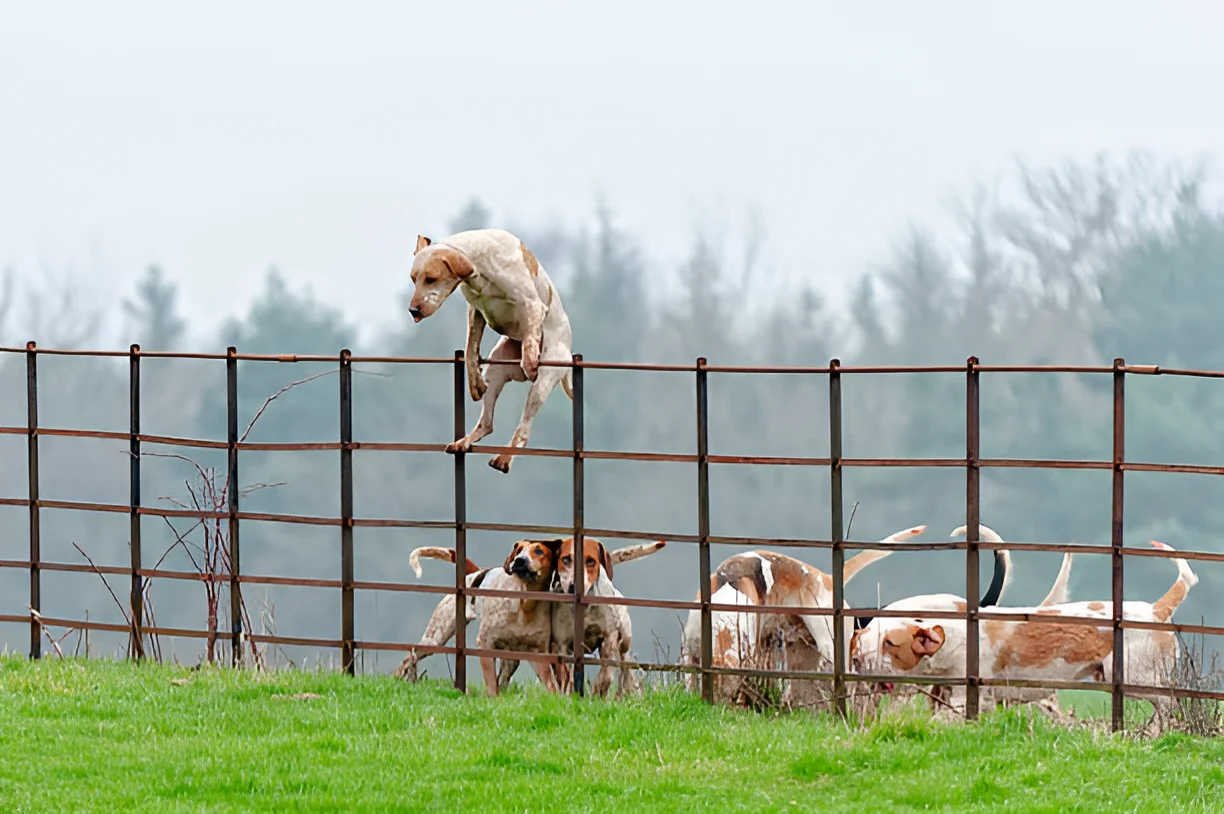Yes, dogs can hurt each other through a fence if they engage in aggressive behaviors. Understanding the risks and implementing preventive measures can help ensure the safety and well-being of your pets. Dog owners often rely on fences to keep their pets safe and contained within their property. However, fences can sometimes become battlegrounds where dogs engage in aggressive behaviors, potentially leading to injuries. This article explores the reasons behind fence aggression, the risks involved, and effective strategies to prevent dogs from hurting each other through a fence.
Understanding Fence Aggression
What is Fence Aggression?
Fence aggression, also known as barrier frustration, occurs when dogs exhibit aggressive behaviors towards each other through a fence. This can include barking, growling, lunging, and even attempting to bite through the fence. The physical barrier can heighten a dog’s frustration and territorial instincts, leading to aggressive displays.
Why Do Dogs Exhibit Fence Aggression?
Several factors can contribute to fence aggression:
- Territorial Instincts: Dogs are naturally territorial animals. When they see another dog on the other side of the fence, they may perceive it as an intruder and react aggressively to protect their territory.
- Frustration: The inability to physically interact with the other dog can lead to frustration, which manifests as aggressive behavior.
- Lack of Socialization: Dogs that have not been properly socialized may be more prone to fence aggression. They may not know how to interact appropriately with other dogs.
- Previous Negative Experiences: If a dog has had negative encounters with other dogs, it may be more likely to exhibit aggressive behaviors through a fence.
Risks of Fence Aggression
Physical Injuries
Dogs can sustain various injuries from fence aggression:
- Bite Wounds: Dogs can bite each other through the gaps in a fence, leading to puncture wounds and lacerations.
- Scratches and Abrasions: Aggressive interactions can cause dogs to scratch or scrape themselves against the fence.
- Broken Teeth: Dogs may attempt to bite the fence itself, resulting in broken or damaged teeth.
Emotional and Behavioral Impact
Fence aggression can also have long-term emotional and behavioral effects on dogs:
- Increased Aggression: Repeated aggressive encounters can reinforce aggressive behaviors, making the dog more prone to aggression in other situations.
- Anxiety and Stress: The constant stress of fence aggression can lead to anxiety and other behavioral issues.
- Fear of Other Dogs: Dogs that experience aggressive encounters through a fence may develop a fear of other dogs, making socialization more challenging.
Preventing Fence Aggression
Training and Socialization
Proper training and socialization are crucial in preventing fence aggression:
- Early Socialization: Expose your dog to various environments, people, and other dogs from a young age. This helps them learn appropriate behaviors and reduces the likelihood of aggression.
- Obedience Training: Teach your dog basic commands such as “sit,” “stay,” and “leave it.” These commands can help you manage your dog’s behavior around the fence.
- Positive Reinforcement: Use positive reinforcement techniques to reward your dog for calm behavior around the fence. Treats, praise, and toys can be effective motivators.
Environmental Modifications
Making changes to the environment can also help reduce fence aggression:
- Solid Fencing: Replace chain-link or see-through fences with solid panels to block the dogs’ view of each other. This can reduce visual stimuli that trigger aggression.
- Double Fencing: Create a buffer zone by installing a second fence a few feet away from the existing one. This physical separation can prevent direct interactions.
- Barrier Plants: Plant shrubs or hedges along the fence line to create a natural barrier. This can help block the dogs’ view and reduce aggressive behaviors.
Supervised Playtime
Supervised playtime can help dogs learn to interact appropriately:
- Controlled Introductions: Introduce the dogs to each other in a controlled environment, such as a neutral territory. Gradually increase their interaction time while monitoring their behavior.
- Leash Training: Keep the dogs on leashes during initial interactions to maintain control and prevent aggressive behaviors.
- Positive Interactions: Encourage positive interactions by rewarding the dogs for calm and friendly behavior. This can help them associate each other with positive experiences.
Conclusion
In conclusion, dogs can indeed hurt each other through a fence if they engage in aggressive behaviors. Understanding the causes of fence aggression and implementing preventive measures can help ensure the safety and well-being of your pets. By focusing on training, socialization, and environmental modifications, you can create a peaceful and secure environment for your dogs.
The photo featured below the post headline is Credit: dageldog/istockphoto
I hope you find this post helpful and informative. If Yes’ feel free to share it with your friends!
Frequently Asked Questions
Can dogs bite each other through a fence?
Yes, dogs can bite each other through the gaps in a fence, leading to injuries such as puncture wounds and lacerations.
How can I prevent my dog from being aggressive through the fence?
Preventing fence aggression involves proper training, socialization, and environmental modifications such as installing solid fencing or creating a buffer zone.
What are the risks of fence aggression?
Fence aggression can lead to physical injuries, increased aggression, anxiety, and fear of other dogs.
Can solid fencing help reduce fence aggression?
Yes, solid fencing can block the dogs’ view of each other, reducing visual stimuli that trigger aggressive behaviors.
Is it possible to train a dog to stop fence aggression?
Yes, with consistent training, socialization, and positive reinforcement, you can reduce and manage fence aggression in dogs.

